Unleashing the Power of Brown and Beige Fat: A Comprehensive Guide to Understanding Body Fat1/17/2024 In this comprehensive guide, we delve into the fascinating world of body fat, exploring its different types and their implications for health. While white fat is the most common and well-known type, our focus extends to the remarkable potential of brown and beige fat. Join us as we uncover the secrets of these metabolic powerhouses and discover how they can revolutionize our approach to health and well-being.
1. White Fat: Energy Storage and More White fat, or white adipose tissue (WAT), serves as a crucial energy storage system, insulation for temperature regulation, and a hormone-secreting organ. However, excessive accumulation of white fat can lead to obesity and associated health risks. 2. Brown Fat: The Metabolic Furnace Brown fat, or brown adipose tissue (BAT), is a unique type of fat that burns calories and generates heat. Packed with energy-burning mitochondria, brown fat acts as a metabolic furnace, increasing our metabolic rate and potentially aiding in weight management. It also plays a role in regulating blood sugar levels, improving insulin sensitivity, and promoting cardiovascular health. 3. Beige Fat: The Hybrid Transformer Beige fat, also known as brite (brown-in-white) fat, is a fascinating hybrid between white and brown fat. It possesses the ability to switch between white and brown characteristics, depending on various stimuli. Beige fat can be induced in white fat cells through cold exposure, exercise, and certain hormones. Like brown fat, beige fat can burn calories and generate heat, making it a potential target for weight management and metabolic health. 4. Activating and Optimizing Brown and Beige Fat: To tap into the potential of brown and beige fat, consider the following strategies: - Engage in regular exercise: Physical activity can stimulate the activation and growth of brown and beige fat. - Exposure to cold temperatures: Cold exposure, such as cold showers or outdoor activities, can activate brown and beige fat. - Adequate sleep: Prioritize quality sleep, as it plays a role in the regulation of brown and beige fat activity. - Optimize nutrition: Incorporate a diet rich in healthy fats, spices, and thermogenic foods to support brown and beige fat function. - Lifestyle factors: Manage stress effectively, maintain a balanced diet, and prioritize overall well-being to support the activation and optimization of brown and beige fat. Conclusion: Understanding the different types of body fat, including white, brown, and beige fat, is crucial for optimizing our health. While white fat stores energy, brown and beige fat act as metabolic powerhouses with numerous health benefits. By embracing a balanced lifestyle, engaging in regular exercise, optimizing nutrition, and implementing strategies to activate and optimize brown and beige fat function, we can unlock their transformative power. Let us embark on this journey together and harness the potential of brown and beige fat to revolutionize our approach to body fat and overall well-being.
0 Comments
Protein is an essential macronutrient that plays a crucial role in various aspects of our health. It is composed of amino acids, which are the building blocks of our body. Protein is involved in many bodily functions, including muscle building, weight loss, and promoting satiety.
One of the primary roles of protein is its importance in building and repairing muscles. When we engage in physical activities such as weightlifting or resistance training, our muscles undergo microscopic damage. Protein helps in repairing and rebuilding these damaged muscle tissues, leading to muscle growth and strength development. This is why protein is often associated with muscle building and is highly valued by athletes and fitness enthusiasts. Protein also plays a significant role in weight loss. It has a high thermic effect, meaning that our body burns more calories to digest and process protein compared to fats and carbohydrates. This increased calorie expenditure can contribute to weight loss and boost metabolism. Additionally, protein helps in preserving lean muscle mass during weight loss, which is crucial for maintaining a healthy body composition. Protein is known to promote satiety, which means it helps us feel fuller for longer periods. Including protein-rich foods in our meals can help control hunger and reduce cravings, making it easier to stick to a calorie-controlled diet. This can be particularly beneficial for individuals trying to lose weight or maintain a healthy weight. There are several sources of protein that can be incorporated into a balanced diet. Some examples of protein-rich foods include: 1. Lean meats: Chicken breast, turkey, lean beef, and pork tenderloin are excellent sources of high-quality protein. 2. Fish and seafood: Salmon, tuna, shrimp, and cod are not only rich in protein but also provide essential omega-3 fatty acids. 3. Eggs: Whole eggs are a complete protein source and can be consumed in various ways. 4. Dairy products: Greek yogurt, cottage cheese, and milk are rich in protein and also provide calcium. 5. Legumes: Beans, lentils, chickpeas, and soybeans are plant-based sources of protein, suitable for vegetarians and vegans. 6. Nuts and seeds: Almonds, peanuts, chia seeds, and hemp seeds are protein-rich options that also provide healthy fats. To ensure you are getting enough protein, you can follow these tips: 1. Calculate your protein needs: The recommended daily intake of protein is around 0.8 grams per kilogram of body weight. However, individuals engaged in intense physical activities may require higher protein intake. 2. Track your protein intake: Use a food diary or a mobile app to track your daily protein consumption and ensure you are meeting your goals. 3. Include protein in every meal: Aim to include a source of protein in each meal, such as lean meats, fish, eggs, or legumes. 4. Opt for lean protein sources: Choose lean cuts of meat, remove visible fat, and opt for low-fat dairy products to reduce saturated fat intake. 5. Snack on protein-rich foods: Incorporate protein-rich snacks like Greek yogurt, nuts, or protein bars to increase your daily protein intake. 6. Consider protein supplements: If you struggle to meet your protein needs through food alone, protein supplements like whey protein powder can be a convenient option. By incorporating a variety of protein sources into your diet and following these tips, you can ensure you are getting enough protein to support muscle building, weight loss, and overall health. Obstructive Sleep apnea, a common yet potentially serious sleep disorder, is often associated with a multitude of health issues, including heart disease, stroke, and diabetes. However, the good news is that lifestyle changes, particularly in nutrition, and weight loss can significantly improve, and in some cases, completely eliminate this condition. At Elevation Health Solutions, we offer comprehensive health coaching and sleep testing services to guide you on your journey towards better sleep and overall health.
The Link Between Weight and Sleep Apnea Numerous studies have established a strong correlation between weight and sleep apnea. A study published in the American Journal of Respiratory and Critical Care Medicine found that a 10% weight gain predicted a six-fold increase in the odds of developing moderate to severe sleep apnea. Conversely, weight loss was associated with a significant decrease in sleep apnea severity. The reason behind this is simple: excess weight, particularly around the neck, can narrow your airway and increase the likelihood of sleep apnea. Therefore, losing weight can help widen your airways and improve your breathing while you sleep. The Power of Weight Loss and Lifestyle Intervention A recent study has shown the profound impact of an interdisciplinary weight loss and lifestyle intervention program on sleep apnea severity in men. The program, which included dietary changes, physical activity, and behavioral therapy, led to significant improvements in sleep apnea symptoms and sleep quality. These findings underscore the effectiveness of weight loss interventions in managing sleep apnea, reinforcing the importance of our comprehensive approach to health and wellness at Elevation Health Solutions. How Much Weight to Lose? The amount of weight loss needed to see improvements in sleep apnea varies from person to person. However, a study in the Archives of Internal Medicine suggests that even a modest weight loss of 10% can significantly reduce sleep apnea symptoms. It's important to remember that every pound lost contributes to the improvement of your sleep quality. The Role of Health Coaching in Lifestyle Change Changing one's lifestyle is easier said than done. This is where health coaching comes into play. At Elevation Health Solutions, our health coaches provide personalized guidance to help you make sustainable lifestyle changes. They can help you set realistic weight loss goals, develop a balanced diet, and create an exercise regimen that fits your needs and preferences. Health coaching is not just about weight loss. It's about empowering you to take charge of your health, providing you with the knowledge and skills to make informed decisions about your diet, physical activity, and overall lifestyle. The Importance of Ongoing Sleep Testing While lifestyle changes and weight loss can significantly improve sleep apnea, it's crucial to continuously monitor your condition. At Elevation Health Solutions, we offer comprehensive sleep testing services to assess the severity of your sleep apnea and track your progress. Regular sleep testing allows us to fine-tune your treatment plan, ensuring that it remains effective as your body changes. It also provides a tangible measure of your improvement, giving you the motivation to continue on your journey towards better health. Conclusion Sleep apnea is a serious condition, but it's not unbeatable. With lifestyle changes, particularly in nutrition, weight loss, and the right guidance, you can significantly improve your sleep quality and overall health. At Elevation Health Solutions, we're committed to helping you conquer sleep apnea and elevate your health to new heights. Remember, the journey towards better health is a marathon, not a sprint. It takes time, effort, and commitment. But with the right support, you can achieve your health goals and enjoy a good night's sleep. Creatine is a widely popular supplement known for its ability to enhance athletic performance and promote muscle growth. In this blog post, we will delve into what creatine is, its discovery, the benefits of taking it as a supplement, and provide tips on how to effectively incorporate it into your fitness routine. Additionally, we are proud to offer high-quality creatine supplements from DotFit and Thorne through our company, Elevation Health Solutions.
What is Creatine? Creatine is a naturally occurring compound found in small amounts in certain foods, such as meat and fish. It is also produced by the body in the liver, kidneys, and pancreas from the amino acids glycine, arginine, and methionine. Creatine plays a crucial role in providing energy to cells, particularly during high-intensity exercise. Discovery of Creatine: Creatine was first discovered in 1832 by a French scientist named Michel Eugène Chevreul. However, it wasn't until the 1990s that creatine gained significant attention as a sports supplement due to its performance-enhancing properties. Benefits of Creatine Supplementation: 1. Increased Muscle Strength and Power: Numerous studies have shown that creatine supplementation can significantly increase muscle strength and power. It enhances the body's ability to produce adenosine triphosphate (ATP), the primary source of energy for muscle contractions. This leads to improved performance in activities that require short bursts of intense effort, such as weightlifting and sprinting. 2. Enhanced Muscle Growth: Creatine has been shown to stimulate protein synthesis, leading to increased muscle mass and size. It also promotes water retention within muscle cells, creating a more anabolic environment for muscle growth. 3. Improved Exercise Capacity: Creatine supplementation has been found to enhance exercise capacity, allowing individuals to perform more repetitions or sustain higher intensity for longer durations. This can be particularly beneficial for athletes and individuals engaged in high-intensity training. 4. Faster Recovery: Creatine has been shown to reduce muscle damage and inflammation, leading to faster recovery between workouts. This allows for more frequent training sessions and overall better progress. Research on Creatine: Several studies have investigated the effects of creatine supplementation on athletic performance and muscle growth. For example: - A meta-analysis published in the Journal of Strength and Conditioning Research concluded that creatine supplementation significantly increased strength and power in resistance-trained individuals. - A study published in the Journal of the International Society of Sports Nutrition found that creatine supplementation improved muscle strength and body composition in older adults. - Research published in the Journal of Applied Physiology demonstrated that creatine supplementation increased muscle fiber size and improved exercise performance in elite swimmers. Tips for Effective Creatine Supplementation: 1. Dosage: The most common dosage for creatine supplementation is 3-5 grams per day. This can be taken in a single dose or divided into smaller doses throughout the day. It is recommended to start with a loading phase of 20 grams per day for 5-7 days to saturate the muscles, followed by a maintenance phase of 3-5 grams per day. 2. Timing: Creatine can be taken at any time of the day, as long as it is consistently consumed. Some individuals prefer to take it before or after their workouts to maximize its benefits. However, there is no significant difference in absorption or effectiveness based on timing. 3. Hydration: It is essential to stay adequately hydrated while taking creatine, as it can cause water retention within the muscles. Drinking plenty of water throughout the day will help maintain optimal hydration levels. 4. Cycling: Creatine supplementation does not require cycling on and off like some other supplements. It can be taken continuously without adverse effects. However, if you decide to discontinue creatine use, there is no need for a gradual tapering-off period. Conclusion: Creatine is a powerful supplement that can significantly enhance athletic performance, promote muscle growth, and aid in recovery. With its proven benefits and extensive research backing its efficacy, incorporating creatine into your fitness routine can take your training to the next level. At Elevation Health Solutions, we offer high-quality creatine supplements from DotFit and Thorne, ensuring you have access to the best products on the market. Remember to follow the recommended dosage, stay hydrated, and enjoy the benefits of this remarkable supplement. Disclaimer: Before starting any new supplement, it is essential to consult with a healthcare professional to ensure it is safe and suitable for your individual needs. Embarking on a weight loss journey can be both exciting and challenging. While the scale is often seen as the ultimate measure of progress, it's crucial to remember that there are numerous other metrics and non-scale victories that deserve recognition. In this blog, we will explore the importance of shifting our focus from the scale to other aspects of our health journey, such as body composition, measurements, and non-scale victories. Additionally, we will discuss the significance of maintaining a positive mindset and offer guidance on establishing consistent habits for long-term success.
Beyond the Scale: Body Composition and Measurements: When it comes to weight loss, it's essential to understand that the number on the scale doesn't tell the whole story. Body composition, which refers to the ratio of fat to muscle in your body, is a more accurate indicator of progress. As you engage in regular exercise and adopt a healthy eating plan, you may notice changes in your body composition, even if the scale doesn't budge significantly. Measuring your waist, hips, and other body parts can also provide valuable insights into your progress. Remember, losing inches and gaining muscle are positive signs of a healthier body, regardless of what the scale says. We offer a combination of both the InBody and Styku scans to achieve the optimal measurement of body composition and circumference measurements. It is the most accurate way to capture the trending metrics throughout your health journey. Celebrating Non-Scale Victories: Non-scale victories (NSVs) are achievements that go beyond the numbers on the scale. These victories can include fitting into clothes that were previously too tight, having more energy throughout the day, or being able to participate in physical activities that were once challenging. By focusing on NSVs, you shift your attention to the positive changes happening within your body and mind. Celebrating these victories can boost your motivation and reinforce the idea that weight loss is not just about numbers but about overall well-being. Cultivating a Positive Mindset: Maintaining a positive mindset is crucial during any health journey. It's important to remember that progress takes time and setbacks are a natural part of the process. Here are a few tips to help you cultivate a positive mindset: a) Practice self-compassion: Be kind to yourself and acknowledge that change takes time. Avoid negative self-talk and focus on the progress you have made. b) Set realistic goals: Instead of fixating on a specific number on the scale, set achievable goals that focus on overall health and well-being. This could include incorporating more fruits and vegetables into your diet or committing to regular exercise. c) Surround yourself with support: Seek out a supportive community or enlist the help of a friend, family member or Health Coach who can provide encouragement and accountability. Sharing your journey with others can make the process more enjoyable and less daunting. Consistency in Habits: Consistency is key when it comes to achieving long-term success in your health journey. Instead of relying on short-term diets or extreme exercise regimens, focus on building sustainable habits. Here are a few habits to prioritize: a) Balanced nutrition: Aim to consume a variety of nutrient-dense foods, focusing on whole grains, lean proteins, fruits, and vegetables. Avoid restrictive diets and instead adopt a balanced approach to eating. b) Regular physical activity: Find activities you enjoy and make them a regular part of your routine. Whether it's walking, dancing, or weightlifting, consistency is more important than intensity. c) Mindful eating: Pay attention to your body's hunger and fullness cues. Eat slowly, savor your meals, and listen to your body's signals to avoid overeating. Why Not Weigh Every Day? Weighing yourself every day can be counterproductive for a few reasons. First, your weight can fluctuate throughout the day due to a number of factors, such as food, water, and exercise. This means that you may see a significant change in your weight from one day to the next, even if you're not actually gaining or losing weight. This can be discouraging and make it difficult to stay motivated. Second, weighing yourself every day can focus your attention on the scale. This can lead to unhealthy behaviors, such as restricting your food intake or overexercising. A Recommendation: A better approach is to weigh yourself once a week at the same time of day. This will help you to track your progress accurately and avoid the discouragement that can come from seeing daily fluctuations in your weight. Here are some additional tips for weighing yourself in a healthy way: Weigh yourself first thing in the morning after using the bathroom and before eating or drinking anything. Weigh yourself under the same conditions each time. This means wearing the same type of clothing or being naked each time you weigh yourself. Don't focus on the scale. Remember that the scale is just one metric of your overall health and well-being. Focus on making healthy lifestyle changes and celebrating your non-scale victories. Conclusion: Shifting our focus from the scale to other metrics, such as body composition, measurements, and non-scale victories, allows us to appreciate the holistic changes happening within our bodies. By cultivating a positive mindset and prioritizing consistent habits, we can embark on a health journey that is sustainable, enjoyable, and focused on overall well-being. Remember, the scale is just one small part of the bigger picture. Embrace the journey, celebrate your victories, and let your progress shine beyond the numbers. In our quest for a long and fulfilling life, we often look for inspiration from those who have achieved remarkable longevity. The Blue Zones, five regions around the world with the highest concentration of centenarians, offer valuable insights into the habits and lifestyles that contribute to their exceptional health and longevity. Let's explore each of these zones - Loma Linda, CA, Nicoya Costa Rica, Sardinia Italy, Icaria Greece, and Okinawa Japan - and discover how we can incorporate their practices into our own lives.
1. Loma Linda, CA: Located in Southern California, Loma Linda stands out for its high concentration of Seventh-day Adventists. Their faith encourages a healthy lifestyle, emphasizing a plant-based diet, regular exercise, and a day of rest. The community's strong sense of purpose and close-knit social connections contribute to their longevity. 2. Nicoya, Costa Rica: In Nicoya, Costa Rica, the locals attribute their long lives to a combination of a plant-based diet, physical activity through daily chores, and a strong sense of community. Their diet is rich in beans, corn, and tropical fruits, while their social connections and support systems foster a sense of belonging and purpose. 3. Sardinia, Italy: Sardinia, an island in the Mediterranean, boasts the highest concentration of male centenarians. The Sardinian lifestyle revolves around a plant-based diet, rich in whole grains, legumes, and goat's milk. Physical activity is an integral part of their daily routine, with walking being a common mode of transportation. Strong family ties and a deep-rooted sense of community contribute to their longevity. 4. Icaria, Greece: Icaria, a small Greek island, is known for its relaxed pace of life and low-stress levels. The inhabitants follow a Mediterranean diet, rich in vegetables, olive oil, and herbal teas. Regular physical activity, such as gardening and walking, is a natural part of their daily lives. The close-knit community and emphasis on socializing and enjoying life contribute to their overall well-being. 5. Okinawa, Japan: Okinawa, an island in Japan, is renowned for its high number of centenarians. The Okinawan diet, known as "Hara Hachi Bu," emphasizes eating until one is 80% full. Their diet consists of nutrient-dense foods like sweet potatoes, tofu, and seaweed. Regular physical activity, such as gardening and martial arts, keeps them active. Strong family bonds, social support, and a sense of purpose contribute to their longevity. Similarities and Findings: Despite their geographical and cultural differences, the Blue Zones share common lifestyle practices that contribute to longevity: 1. Movement: Regular physical activity is an integral part of their daily lives, often in the form of natural movements like walking, gardening, and household chores. 2. Sense of Purpose: Having a strong sense of purpose and a reason to wake up each day contributes to their overall well-being and longevity. 3. Stress Reduction: Blue Zone inhabitants have lower stress levels due to their relaxed lifestyles, strong social connections, and emphasis on leisure and enjoyment. 4. Diet: A predominantly plant-based diet, rich in whole grains, legumes, fruits, and vegetables, forms the foundation of their eating habits. They consume minimal processed foods and practice portion control. 5. Family and Social Life: Strong family bonds, social support, and a sense of belonging are crucial factors in their longevity. 6. Spirituality: Many Blue Zone communities have a spiritual or religious foundation that provides a sense of purpose, community, and support. Incorporating Blue Zone Habits into Our Lives: To optimize our health and longevity, we can adopt some of the practices observed in the Blue Zones: 1. Prioritize movement: Incorporate physical activity into your daily routine, such as walking, gardening, or taking the stairs. 2. Find your purpose: Discover activities that bring you joy and a sense of fulfillment, whether through work, hobbies, or volunteering. 3. Manage stress: Practice stress reduction techniques like meditation, deep breathing, or engaging in activities that help you relax and unwind. 4. Embrace a plant-based diet: Increase your intake of fruits, vegetables, whole grains, and legumes while reducing processed foods and practicing portion control. 5. Cultivate social connections: Foster meaningful relationships, spend time with loved ones, and engage in community activities to strengthen your social support network. 6. Nourish your spirituality: Explore practices that align with your beliefs, such as meditation, prayer, or engaging in acts of kindness and gratitude. Conclusion: The Blue Zones offer us valuable insights into the habits and lifestyles that contribute to exceptional health and longevity. By incorporating movement, purpose, stress reduction, a plant-based diet, strong social connections, and spirituality into our lives, we can optimize our health and increase our chances of living a long and fulfilling life. Let's learn from these remarkable communities and embark on our own journey towards well-being and longevity. As I sit here sipping my third cup of coffee for the day, I can't help but think about my love-hate relationship with caffeine. On one hand, I can't function without it. On the other hand, I know it's not the healthiest habit to have especially for my sleep. But let's dive deeper into the world of caffeine and see what it's all about.
History of Caffeine Use Caffeine has been used for centuries in different parts of the world. The earliest recorded use of caffeine was in China in 2737 BC, where it was used as a tea. In the Middle East, coffee was first brewed in the 15th century, and it quickly spread to Europe and the rest of the world. Today, caffeine is consumed in various forms, including coffee, tea, energy drinks, and even chocolate. Health Benefits of Caffeine Caffeine has been shown to have several health benefits, especially in regards to fitness, nutrition, and metabolism. It can help improve athletic performance by increasing endurance and reducing fatigue. It can also boost metabolism and aid in weight loss. Additionally, caffeine has been linked to a reduced risk of several diseases, including Parkinson's, Alzheimer's, and liver disease. Caffeine Dosage and Timing The recommended daily caffeine intake for adults is 400mg, which is roughly equivalent to four cups of coffee. However, it's important to note that caffeine affects everyone differently, and some people may be more sensitive to it than others. It's also important to be mindful of when you consume caffeine, as it can affect your sleep. It's best to avoid caffeine in the late afternoon and evening to ensure a good night's rest. Negative Effects of Caffeine While caffeine has its benefits, it's important to be aware of its negative effects as well. Consuming too much caffeine can lead to jitters, anxiety, and even heart palpitations. It can also disrupt sleep, which can have a negative impact on overall health. If you're someone who struggles with sleep, it's best to avoid caffeine altogether or limit your intake to the morning hours. In conclusion, caffeine is a complex and fascinating substance that has been used for centuries. While it has its benefits, it's important to be mindful of its negative effects and consume it in moderation. As for me, I'll continue to enjoy my daily dose of caffeine, but I'll also make sure to listen to my body and know when it's time to cut back. The pillars of health are physical activity, healthy eating, and quality sleep. These three pillars are essential for maintaining good health and well-being. Each pillar plays a crucial role in our overall health, and neglecting any one of them can have a significant impact on our health.
Physical activity is essential for maintaining a healthy body weight, reducing the risk of chronic diseases, and improving mental health. Regular exercise can help improve cardiovascular health, strengthen bones and muscles, and boost the immune system. Examples of physical activity include walking, running, cycling, swimming, and strength training. Healthy eating is crucial for providing the body with the nutrients it needs to function correctly. A balanced diet that includes a variety of fruits, vegetables, whole grains, lean proteins, and healthy fats can help reduce the risk of chronic diseases such as heart disease, diabetes, and cancer. Eating a healthy diet can also help maintain a healthy weight and improve mental health. Quality sleep is essential for overall health and well-being. Getting enough sleep can help improve mood, cognitive function, and physical performance. Lack of sleep can lead to a range of health problems, including obesity, diabetes, and heart disease. Adults should aim for 7-9 hours of sleep per night. Incorporating daily habits to help each pillar is essential for maintaining good health. For physical activity, try to incorporate at least 30 minutes of moderate-intensity exercise into your daily routine. For healthy eating, aim to eat a balanced diet that includes a variety of fruits, vegetables, whole grains, lean proteins, and healthy fats. For quality sleep, establish a regular sleep routine and avoid electronic devices before bedtime. At Elevation Health Solutions, we specialize in improving health by focusing on these pillars with our coaching and habit-building programs. Our programs are designed to help individuals establish healthy habits that can be sustained over time. We work with individuals to develop personalized plans that incorporate physical activity, healthy eating, and quality sleep. Our coaching and habit-building programs are designed to help individuals achieve their health goals and improve their overall well-being. In conclusion, physical activity, healthy eating, and quality sleep are essential pillars of health. Neglecting any one of these pillars can have a significant impact on our health. Incorporating daily habits to help each pillar is essential for maintaining good health. At Elevation Health Solutions, we specialize in improving health by focusing on these pillars with our coaching and habit-building programs. Are you stuck at a certain weight? Do you feel like your weight loss journey has plateaued? The body weight set point could be why.
The body weight set point theory is a fascinating concept that sheds light on the complex mechanisms that regulate our weight. According to this theory, the body has a natural weight range that it tries to maintain, and it can be difficult to lose weight beyond this range. The body weight set point is regulated by a part of the brain called the hypothalamus, which receives signals from the body and adjusts its output accordingly. One of the key hormones involved in the body weight set point is leptin, which is produced by fat cells and acts on the hypothalamus to reduce hunger and increase metabolism. When you try to lose weight, your body may resist by slowing down your metabolism and increasing your hunger levels. This is because your body is trying to maintain its set point and prevent you from losing too much weight too quickly. Unfortunately, this can sometimes lead to weight loss plateaus, where you stop losing weight even though you're still following your diet and exercise plan. This can be frustrating and demotivating, but it's important to remember that it's a natural part of the weight loss process. In addition to leptin, ghrelin and insulin are two other hormones that play a role in the body weight set point theory. Ghrelin is produced by the stomach and stimulates hunger. When you lose weight, your levels of ghrelin increase, which can make you feel hungrier and more likely to overeat. This can make it difficult to maintain weight loss and can contribute to the body's resistance to losing weight beyond its set point. Insulin is a hormone produced by the pancreas that helps regulate blood sugar levels. When you eat carbohydrates, your body releases insulin to help transport glucose into your cells for energy. However, when you consume too many carbohydrates or have insulin resistance, your body may produce too much insulin, which can lead to weight gain and difficulty losing weight. Both ghrelin and insulin can contribute to the body's resistance to losing weight beyond its set point. By managing your diet and lifestyle to help regulate these hormones, you can help reset your body's natural weight range and continue on your weight loss journey. To manage ghrelin levels, it's important to eat a balanced diet that includes protein, fiber, and healthy fats. These nutrients can help keep you feeling full and satisfied, which can help reduce hunger and prevent overeating. It's also important to avoid skipping meals or going too long without eating, as this can cause ghrelin levels to increase. To manage insulin levels, it's important to eat a balanced diet that includes complex carbohydrates, protein, and healthy fats. Avoiding processed foods and sugary drinks can also help regulate insulin levels. Exercise can also help improve insulin sensitivity, which can make it easier to lose weight and maintain a healthy weight. The body weight set point theory is part of the body's natural homeostasis, which is the process by which the body maintains a stable internal environment despite changes in the external environment. Homeostasis is essential for our survival, as it helps us maintain a stable body temperature, blood pressure, and other vital functions. The body weight set point is similar to a thermostat in that it regulates the body's weight in the same way that a thermostat regulates the temperature in a room. Just as a thermostat maintains a set temperature range, the body weight set point maintains a set weight range. When the temperature in a room gets too hot or too cold, the thermostat adjusts the heating or cooling system to bring the temperature back within the set range. Similarly, when the body's weight gets too high or too low, the body weight set point adjusts hunger and metabolism to bring the weight back within the set range. The body weight set point is thought to have evolved as a survival mechanism to help us maintain a healthy weight when food was scarce. In times of famine, the body would slow down metabolism and increase hunger to help us conserve energy and find food. However, in modern times, food is abundant and easily accessible, which can make it difficult to maintain a healthy weight. By understanding the body weight set point theory and how it is part of homeostasis, we can better understand why it can be difficult to lose weight and maintain a healthy weight. It's important to remember that the body weight set point is not a fixed number, and it can be influenced by factors such as diet, exercise, and lifestyle. By making healthy choices and implementing the strategies outlined above, we can help reset our body's natural weight range and achieve our weight loss goals. To break past a weight loss plateau, there are a few things you can try: 1. Change up your exercise routine: If you've been doing the same workout for a while, your body may have adapted to it. Try switching things up by trying a new type of exercise or increasing the intensity of your current routine. 2. Re-evaluate your diet: Are you still eating the same foods and portion sizes as when you started your weight loss journey? It may be time to re-evaluate your diet and make some changes to help jumpstart your weight loss again. 3. Get enough sleep: Lack of sleep can disrupt your hormones and make it harder to lose weight. Make sure you're getting enough sleep each night to help support your weight loss efforts. 4. Manage stress: Stress can also disrupt your hormones and make it harder to lose weight. Find ways to manage your stress, such as through meditation, slow breathing exercies, or other relaxation techniques. 5. Gradual weight loss: Rapid weight loss can trigger your body's starvation response and make it harder to lose weight in the long term. Aim for a gradual weight loss of 1-2 pounds per week to help avoid this. 6. Strength training: Building muscle can help increase your metabolism and make it easier to maintain weight loss. Incorporate strength training into your exercise routine to help build muscle and burn more calories. 7. Mindful eating: Paying attention to your hunger and fullness cues can help you avoid overeating and maintain a healthy weight. Practice mindful eating by eating slowly, savoring your food, and stopping when you feel satisfied, rather than when you're stuffed. In conclusion, the body weight set point theory is a complex and fascinating concept that sheds light on the mechanisms that regulate our weight. By understanding how the body weight set point works and implementing healthy lifestyle changes, we can help reset our body's natural weight range and achieve our weight loss goals. Remember that weight loss plateaus are a natural part of the weight loss process, and there are strategies you can use to break past them and continue on your weight loss journey. With patience, persistence, and a healthy lifestyle, you can achieve your weight loss goals and maintain a healthy weight for life. Total Daily Energy Expenditure (TDEE) is the total amount of energy that our body burns in a day, including all physical activities, digestion, and metabolism. It is an essential factor to consider when setting weight loss and body composition goals. Understanding TDEE can help us determine how many calories we need to consume to maintain, gain, or lose weight.
Calculating your TDEE is relatively simple. There are several online calculators such as one that we have on our Health Calculators page that can help you determine your TDEE based on your age, gender, height, weight, and activity level. However, it is essential to note that these calculators only provide an estimate, and your actual TDEE may vary based on individual factors such as genetics and metabolism. Once you have calculated your TDEE, you can use it to determine your daily calorie needs. If your goal is to lose weight, you will need to consume fewer calories than your TDEE, while if your goal is to gain weight, you will need to consume more calories than your TDEE. It is essential to note that a calorie deficit or surplus of 500-1000 calories per day is generally considered safe and effective for weight loss or gain. In addition to calorie intake, your TDEE can also help you determine how many calories you need to burn through exercise to achieve your goals. For example, if your TDEE is 2000 calories per day, and you want to lose one pound per week, you will need to create a calorie deficit of 3500 calories per week, or 500 calories per day. This deficit can be achieved through a combination of calorie restriction and exercise. TDEE is made up of four components: Basal Metabolic Rate (BMR), Thermic Effect of Feeding (TEF), Non-exercise activity thermogenesis (NEAT), and Thermic effect of activity (TEA). BMR is the amount of energy that our body burns at rest to maintain basic functions such as breathing, circulation, and organ function. This is the amount of calories utilized to simply function without eating or movement. It accounts for about 60-70% of our TDEE. It is very difficult to measure BMR so Resting Metabolic Rate (RMR) is often used. RMR is similar to BMR but is measured under less strict conditions, RMR is slightly higher than BMR due to the thermic effect of food. The best way to improve your BMR and RMR is through strength training, as muscle mass increases our metabolic rate. Cryotherapy has also been known to help increase metabolic rates. We are happy to offer Resting Metabolic rate testing as one of our services. TEF is the energy that our body uses to digest, absorb, and metabolize food. It accounts for about 10% of our TDEE. Protein has the highest thermic effect, followed by carbohydrates and fats. NEAT is the energy that we expend during non-exercise activities such as fidgeting, walking, and standing. It accounts for about 15-20% of our TDEE. Increasing NEAT can be an effective way to burn more calories throughout the day. TEA is the energy that we expend during exercise and physical activity. It accounts for about 10-15% of our TDEE. Increasing TEA can be an effective way to burn more calories and improve overall health. To enhance each component of TDEE for weight loss, we can make small changes to our daily routine. For example, increasing protein intake can increase the thermic effect of feeding. Taking frequent breaks to stand and stretch can increase NEAT. Incorporating strength training and high-intensity interval training (HIIT) can increase TEA. Changing our Body Composition can increase BMR. In conclusion, understanding TDEE is crucial for setting weight loss and body composition goals. By breaking down each component of TDEE and making small changes to our daily routine, we can enhance our TDEE and achieve our desired results. Remember, weight loss is not just about reducing calories, but also about increasing energy expenditure through a combination of diet and exercise. By focusing on TDEE, we can create a sustainable and effective weight loss plan that promotes overall health and well-being. It is important to note that while TDEE is a useful tool for nutrition and exercise planning, it is not the only factor to consider. Other factors, such as macronutrient ratios, meal timing, and exercise intensity, can also impact your weight and body composition goals. It is important to consult with a healthcare professional to determine an appropriate calorie intake and exercise plan based on individual needs and goals. |
AuthorDamian Solorzano is Health and Wellness Influencer, Respiratory Specialist and Health Coach who is passionate about optimizing personal health. Categories
All
Archives
March 2024
|
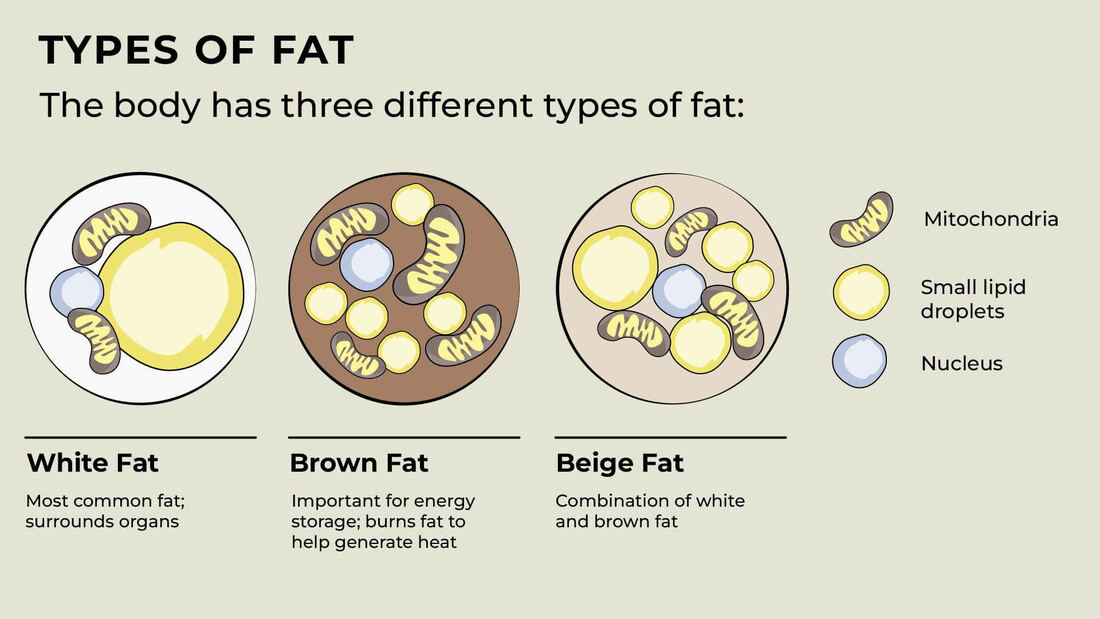


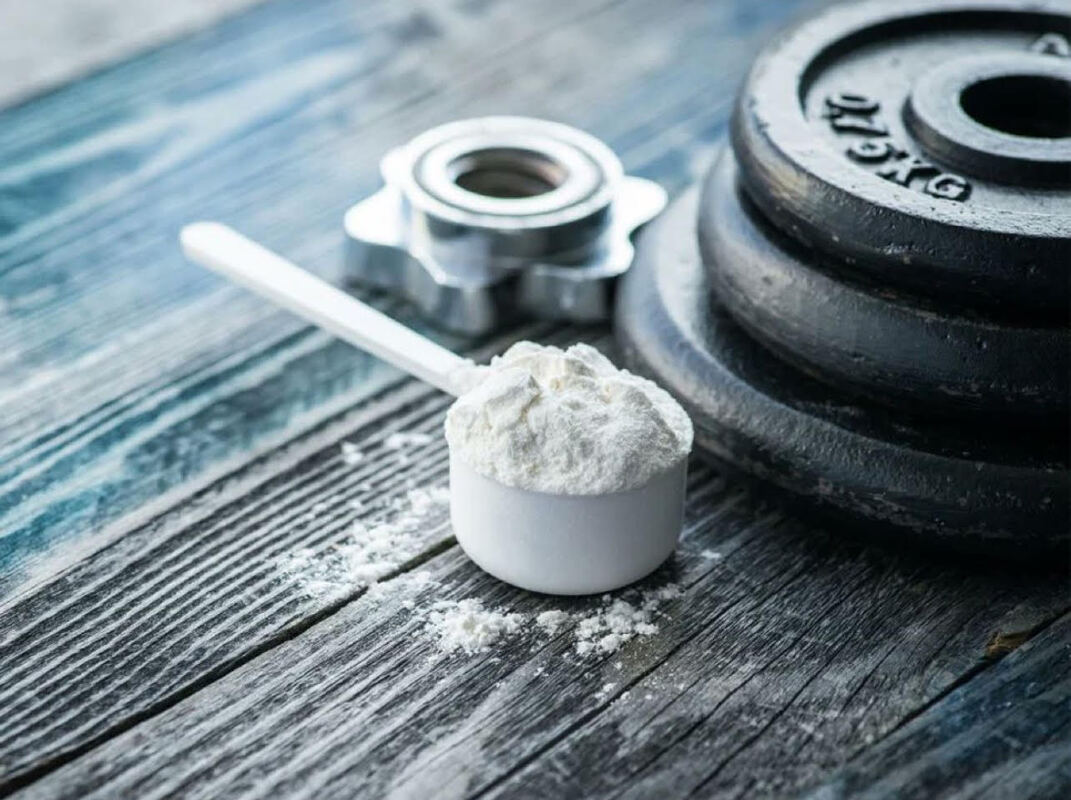
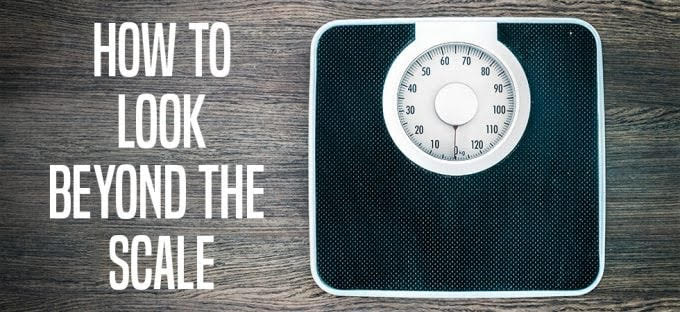

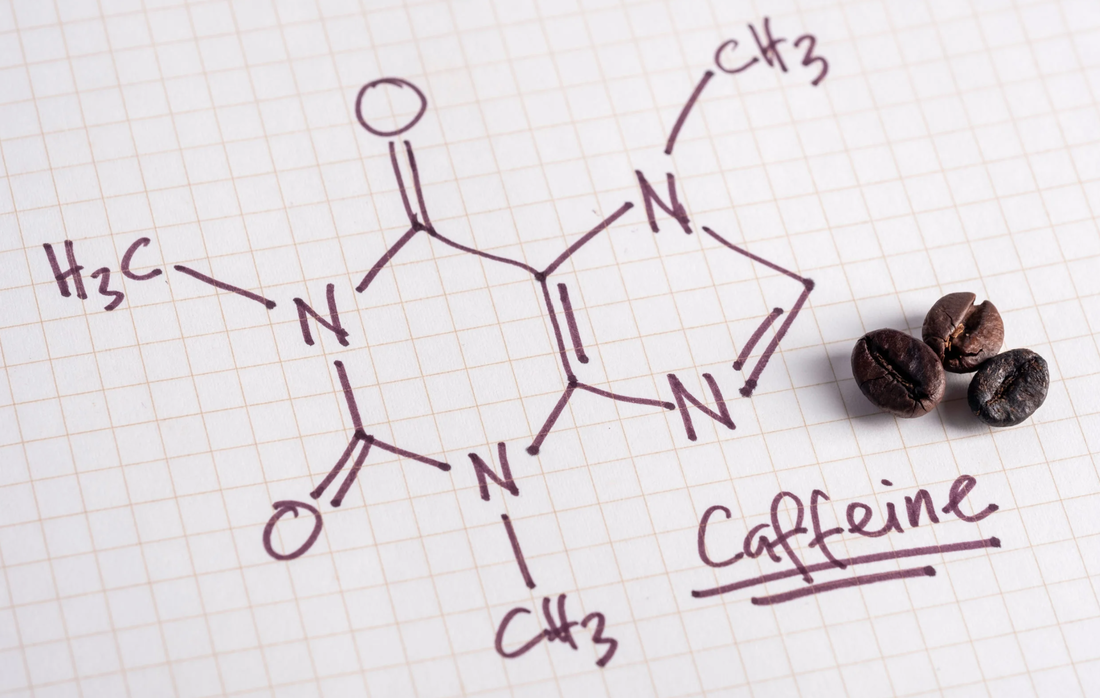
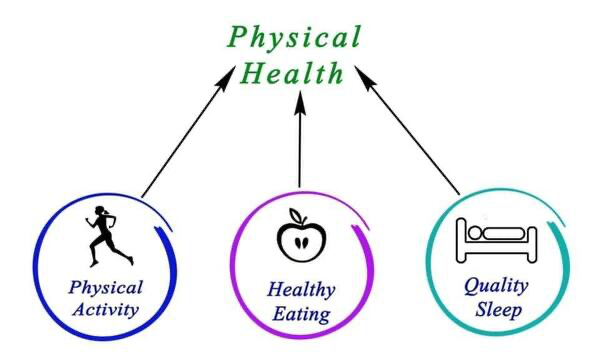

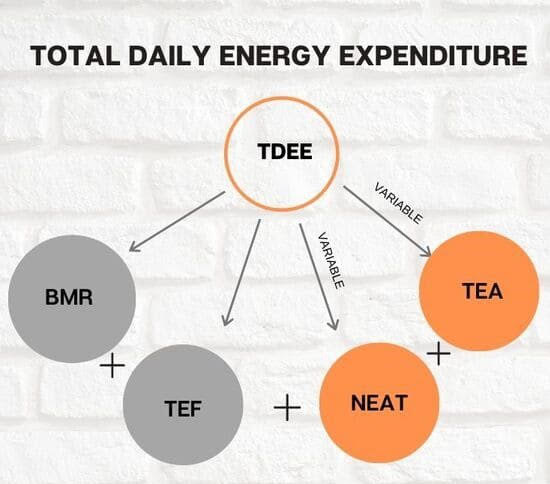
 RSS Feed
RSS Feed